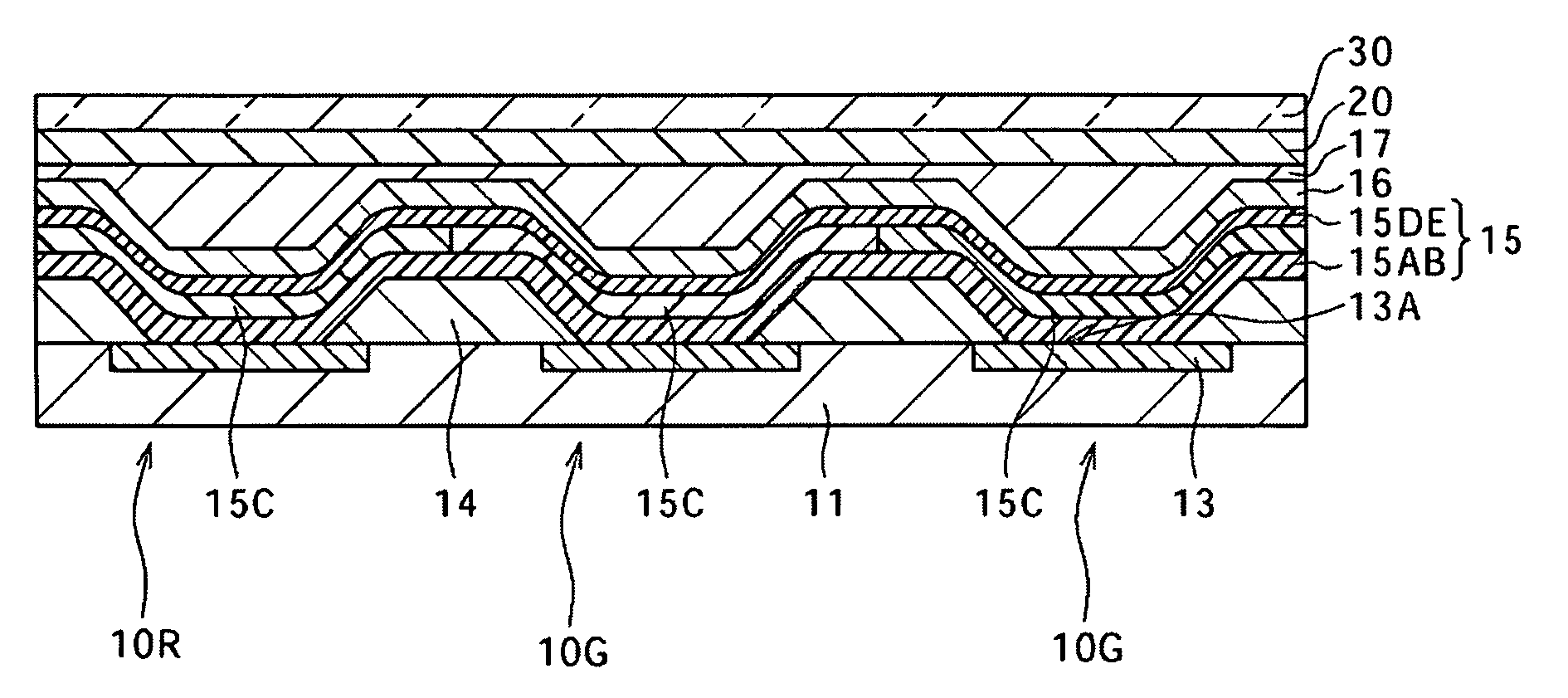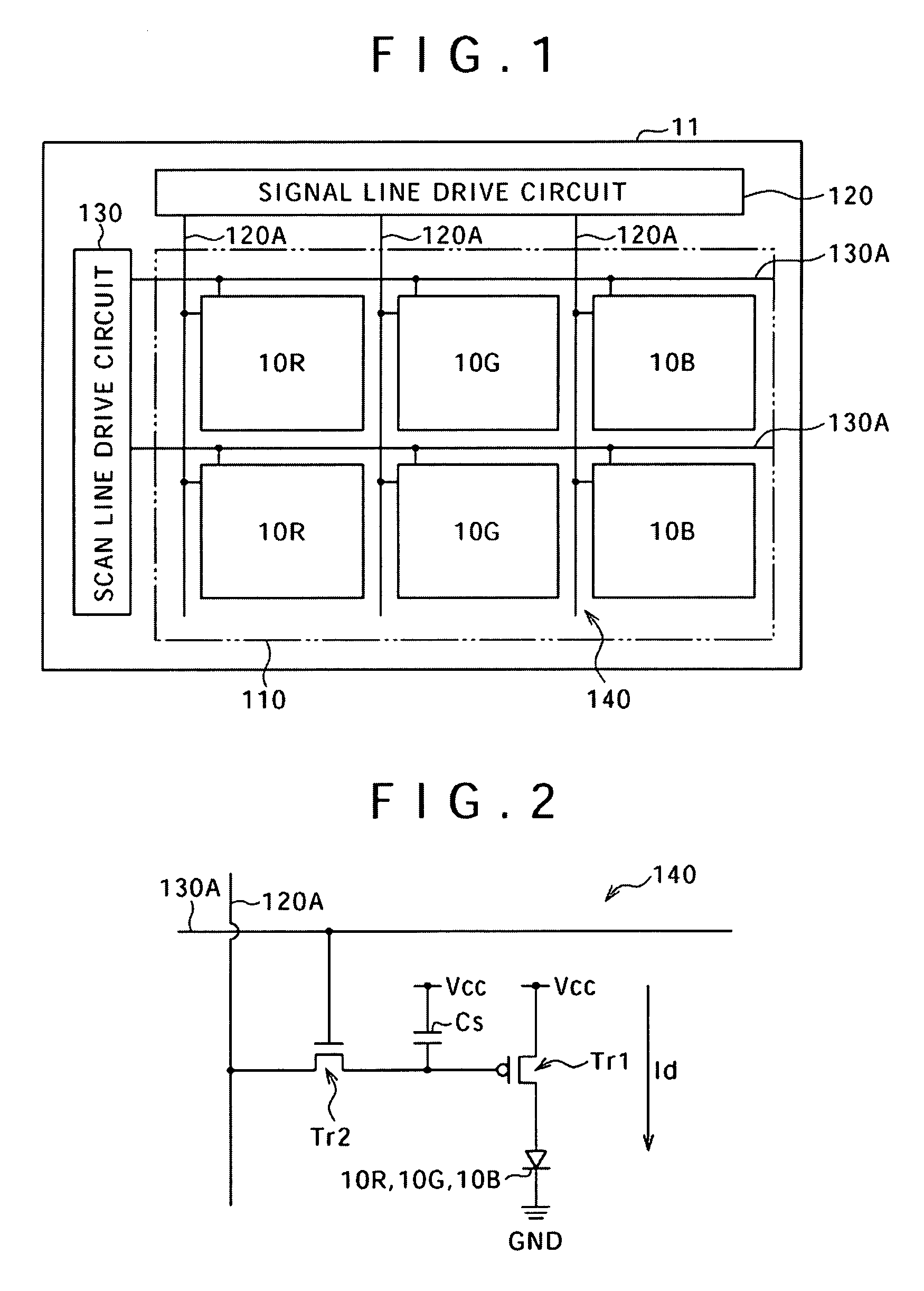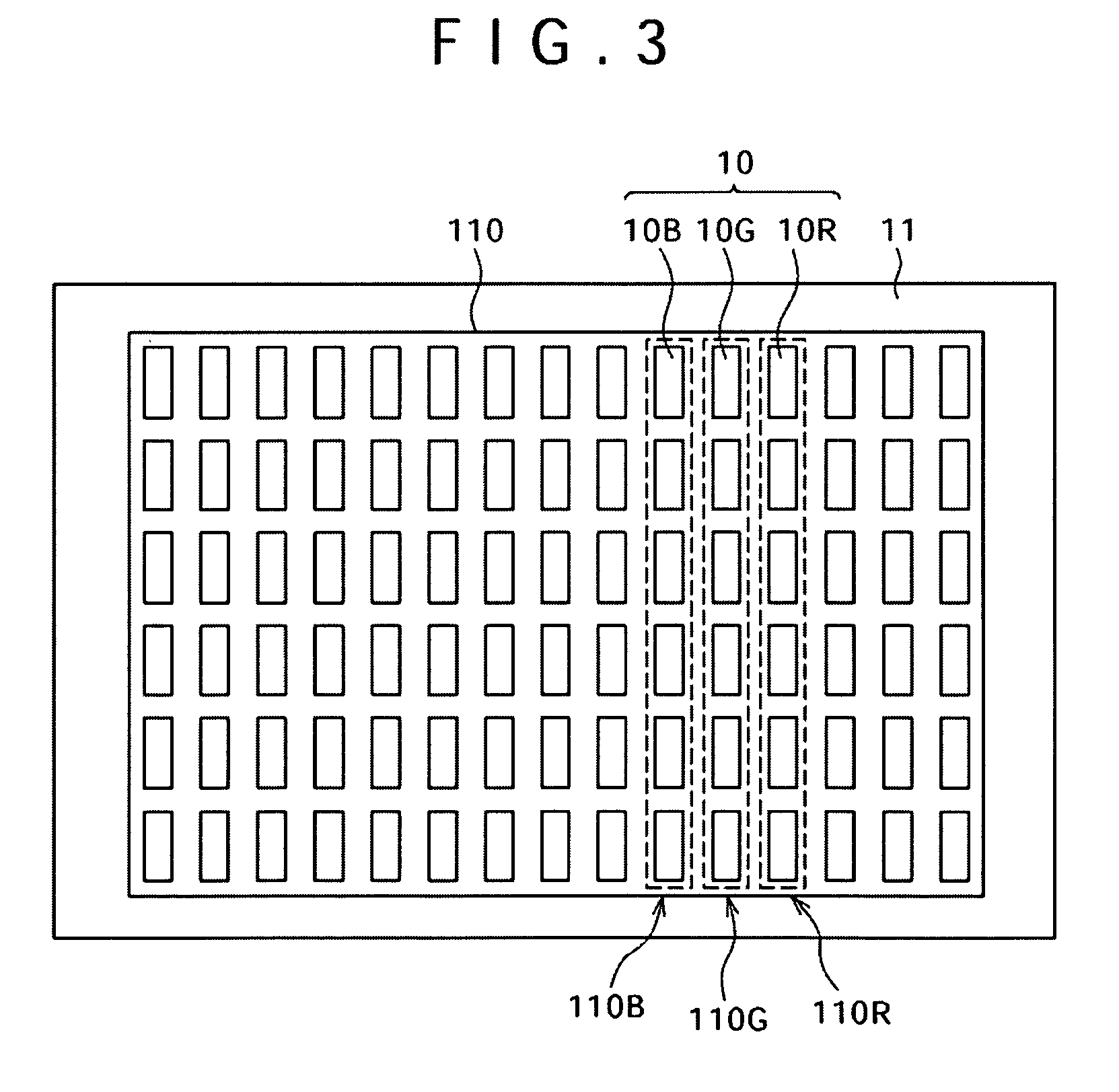Display with organic light emitting elements including a light emitting layer provided by transferring a transfer layer from a donor substrate to an acceptor substrate
a technology of light emitting elements and organic light, applied in the field of display, can solve the problems of streaking unevenness, uneven light, and so on, and achieve the effect of enhancing display quality and suppressing the distribution of film thickness
- Summary
- Abstract
- Description
- Claims
- Application Information
AI Technical Summary
Benefits of technology
Problems solved by technology
Method used
Image
Examples
working examples
[0090]Specific working examples of the present invention will be described below.
working example 1
[0091]Similarly to the first embodiment, a display including the red and blue organic light-emitting elements 10R and 10B was fabricated. In this fabrication, the width of the light-emission area 13A and the distances CC and DD were measured. As a result, the width of the light-emission area 13A was 70 μm, and the distances CC and DD were 78 μm and 122 μm, respectively. The light-emitting latter 15C was formed bad transfer for each of the organic light-emitting elements 10R and 10B. The length of the longitudinal axis of the beam spot of laser light was varied to various values in the range of 70 μm to 130 μm, so that the width W of the light-emitting layer 15C along the row direction was varied to various values in the range of 70 μm to 130 μm. The shorter axis of the beam spot of the laser light was fixed to 20 μm, and the laser light was moved for scanning in the direction perpendicular to the longitudinal direction of the beam spot of the laser light. The wavelength and energy d...
working example 2
[0092]A display was fabricated in the same manner as that of Working example 1, except that the rib 14A shown in FIG. 10 was formed on the top surface of the insulating layer 14 and the distances CC and DD were set to 82 μm and 118 μm, respectively.
[0093]Regarding the displays obtained as Working examples 1 and 2, the distribution of the Film thickness of the light-emitting layer 15C in the light-emission area 13A of the organic light-emitting element 10R and the light-emission efficiency of the organic light-emitting element 10B were investigated. The results are shown in FIG. 22.
[0094]As is apparent from FIG. 22, if the light-emitting layer 15C did not include C, i.e., if the width W of the light-emitting layer 15C along the row direction was smaller than the distance CC, the distribution of the film thickness of the light-emitting layer 15C in the light-emission area 13A of the organic light-emitting element 10R was significantly wide. This causes in-plane luminance unevenness an...
PUM
 Login to View More
Login to View More Abstract
Description
Claims
Application Information
 Login to View More
Login to View More - R&D
- Intellectual Property
- Life Sciences
- Materials
- Tech Scout
- Unparalleled Data Quality
- Higher Quality Content
- 60% Fewer Hallucinations
Browse by: Latest US Patents, China's latest patents, Technical Efficacy Thesaurus, Application Domain, Technology Topic, Popular Technical Reports.
© 2025 PatSnap. All rights reserved.Legal|Privacy policy|Modern Slavery Act Transparency Statement|Sitemap|About US| Contact US: help@patsnap.com



